Top 10 romantic movies
Top 10 romantic movies
Everyone loves a romantic movie, right? Here's what the Guardian and Observer's critics think are the 10 most romantic movies of all time. Let us know what you think in the comments below
Peter Bradshaw on romantic movies
Romantic longing has provided the cinema with some of its most glorious and idealistic movies: Casablanca and Brief Encounter are films with an unabashed, unironic passionate flame at their centre.
Movies such as Gone With the Wind and Doctor Zhivago lent something grand and epic to romantic love, but it was perhaps the much-loved weepie An Affair to Remember that did the most to introduce us to the more domestic idea of the chick flick or the date movie – the romantic film adored by women and tolerated by their husbands and boyfriends.
The romantic comedy was a further refinement, almost invented in its modern sense by Woody Allen and revived by Rob Reiner with his smash-hit, When Harry Met Sally, a success that has spawned a thousand sucrose imitations. Wong Kar-wai's In the Mood For Love is probably the most potent, old-fashioned romance of recent times. Tony Leung and Maggie Cheung have that seductively heartbreaking self-sacrifice shown by Humphrey Bogart and Ingrid Bergman or Celia Johnson and Trevor Howard. Love will never go out of fashion.
10. Jules et Jim
Jules et Jim was the biggest box-office success the French New Wave ever enjoyed. When it opened in Paris in January 1962, it played for nearly three months and it found the same crowds all over the world. (In America, two young men saw it – Robert Benton and David Newman – and they began to write a script that would become Bonnie and Clyde.) Although set in the era of the first world war, its sexual manners were an indicator of the 60s to come, with Catherine (Jeanne Moreau) in love with and loved by two men (at least) – Jules, a German, played by Oskar Werner, and Jim, a Frenchman, played by Henri Serre.
The way Jules et Jim emerged was a tribute to Moreau and to Truffaut's obsession with the idea that women were magical. It's an early dramatisation of feminist principles, but it's also the portrait of a bipolar personality drawn to self-destruction. For Truffaut, it was a perfect balancing act between wry observation and sentimental involvement with his own characters. The period material, the sets and costumes, work very well in a wide-screen format, but in truth it's the lethally mercurial temperament of Moreau that holds it all together. She was at her peak in the early 60s, young enough to be sexually compelling, but wise enough to be a tragic witch. Along with its less famous sequel, Two English Girls, this is Truffaut at his best. David Thomson
9. A Room With a View
Few collaborations are so distinctive that the names of those involved come to denote a genre, rather than just a credit. A Room With a View, the first of director James Ivory and producer Ismail Merchant's EM Forster adaptations, was shot before the term Merchant-Ivory had become an insult; watch it today and you'll blush to have ever smirked at the cliche. This is incredibly fresh and arresting film-making: moving and amusing, swooningly romantic and socially ferocious – nothing less than a full-frontal (in every way) assault on your soul.
Lucy Honeychurch (Helena Bonham Carter) is on a Baedeker-led tour of Florence with punctilious cousin Charlotte (Maggie Smith) when she encounters, at their pensione, free-thinking Mr Emerson (Denholm Elliott) and his dreamy son, George (Julian Sands). Through a series of bloody physical confrontations and, worse yet, sticky etiquette breaches, Lucy's desire for emotional freedom starts to bubble, coming to the boil when George kisses her in a cornfield. But Charlotte witnessed the snog, so Lucy is whisked back to Surrey, where she gets engaged to the horribly priggish Cecil Vyse (Daniel Day-Lewis), to the polite distaste of her family, and the Rev Beebe (Simon Callow, uncharacteristically subtle). Then the Emersons reappear …
What might have been starched and talky in other hands comes out of the wash alive with spring and spirit. The botched embrace between Lucy and Cecil, and the heartbreaking moment when he, after being rejected, puts his boots back on, are once seen, never forgotten. Smith's Charlotte – so funny as a curmudgeonly drag ("The ground will do for me," she says, as cushions are assigned on a picnic, "I haven't had rheumatism for years. And if I do feel a twinge, I shall stand up") – is just tragic alone, as Lucy might well have been, had her story not had such a happy ending. The final scene, a ravishing in a room, with a view, as the bells of Florence chime out, would leave only a stone unmoved. Catherine Shoard
8. Eternal Sunshine of the Spotless Mind
Boy meets girl. They fall in love. Girl gets fed up with boy. Girl erases all memories of boy from her mind in a dubious brain-zapping procedure. Boy finds out and does the same. This is a romantic movie, Charlie Kaufman-style. It takes its title from a 1717 poem by Alexander Pope and charts the side of love that movies usually try to ignore: the arguments, the boredom, the irritating habits that drive couples apart and the dreadful, stilted moments that accompany a break-up. Love Actually, it ain't.
As you would expect from the writer of Being John Malkovich and Adaptation, this is not the story of a doomed relationship told in a straightforward fashion. Joel Barish is a withdrawn, greyish man, played with uncharacteristic restraint by Jim Carrey. Clementine Kruczynski (a brilliant Kate Winslet) is free-spirited, reckless and prone to dying her hair blue. When they meet on a train travelling through wintry Long Island in the film's opening scenes, it's as if they've never met before – but of course they have. The strange attraction that draws them together is down to the fact that, until very recently, they were lovers. Their forgetting is the work of Lacuna Inc, a shady New York company that liberates its clients from unwanted memories.
Eternal Sunshine was Kaufman's second collaboration with Michel Gondry. The resourceful French director proved the perfect match to Kaufman's freewheeling script, which puts us inside Joel's memories as they are being stripped away. The film's concept – that a couple can delete each other after a painful break-up so they can live on in blissful ignorance – seems at first a pessimistic take on love. But chinks of light begin to shine through as Joel's memories of Clementine are systematically sought out and zapped. He recalls that, before the unhappiness set in, there were genuinely happy moments too and he recaptures (too late?) what made them fall for each other in the first place. In spite of all its pitfalls, Kaufman still makes love seem like the most precious thing in the world. Killian Fox
7. Hannah and Her Sisters
That Chekhovian title may have promised Woody Allen at his most pretentious, but this 1986 roundelay grossed $40m and became his biggest ever box-office hit. The film shuffles interconnecting storylines concerning three Manhattan sisters: the warm, well-meaning Hannah (Mia Farrow) is married to the bumbling Elliot (Michael Caine), who is in turn attracted to her sister, Lee (Barbara Hershey). As an affair begins between the two, Lee's own relationship with the tormented artist Frederick (Max von Sydow) comes under strain, and light is brought to an otherwise dark canvas by Hannah's ex-husband, fussbudget TV producer Mickey (Allen), who becomes involved with Hannah's other sister, the jittery Holly (Dianne Wiest).
So what was it about Hannah that made it so successful? The balance of comedy and drama is deftly maintained, and there's a palatable, soapy aspect to Elliot and Lee's affair. The film, with its chapter headings, aspires to a novelistic structure, each part favouring a different character or storyline. And the performances are uniformly subtle, especially from Caine (who won the Oscar for best supporting actor) and the underrated Farrow, who was then an Allen regular as well as his off-screen partner. Indeed, Farrow brings genuine mystery to a nurturing figure who may not be as saintly as she seems. "Hannah was a character neither Mia nor I understood, at the start, and at the finish," Allen admitted. "We could never figure out whether Hannah was the bulwark of the family and the spine who held everyone together, or whether Hannah was not so nice … Mia looked to me for guidance and I could never give it to her."
Typically, the perfectionist director was far from pleased with the movie. "Hannah and Her Sisters is a film I feel I screwed up very badly," he said later. It was the relatively happy ending that was to blame: "That was the part that killed me." But after all the characters have been through in pursuit of love and contentment, you couldn't say they hadn't earned it. Ryan Gilbey
6. The Apartment
Fresh off Some Like It Hot, director Billy Wilder, his co-writer IAL Diamond, and their star, Jack Lemmon, bowled straight into making The Apartment. Two perfect comedies in a row: how's that for a double whammy? The germ of the idea for The Apartment had actually sat in Wilder's notebook for many years, ever since he watched Brief Encounter and scribbled down the words "Movie about the guy who climbs into the warm bed left by two lovers."
CC "Bud" Baxter (Lemmon) is the poor sap in question. He's rising fast at work, one promotion after another, but the secret of his success is that he loans out his apartment to the company executives for their trysts, one 45-minute slot at a time. It's a sleazy little set-up, and Wilder keeps the movie galloping along so briskly that we can overlook the unpleasantness at first. But then reality starts to creep in as Baxter realises that the woman he longs to bring home in his arms – chirpy elevator assistant Fran Kubelik (Shirley MacLaine) – has already been to his apartment, in the company of his boss (Fred MacMurray). The question of how Baxter finds out allows Wilder and Diamond to demonstrate their knack for succinct storytelling: one broken compact mirror is all it takes to make his heart break. They're unbeatable at turning out these "moments" – witness also Baxter's classic straining-spaghetti-through-a-tennis-racket scene, born out of Diamond's realisation that "Women love seeing a man trying to cook in the kitchen."
Such stand-out scenes never impede the film's precise, fluid rhythm. Wilder shot the picture in 50 days flat, and edited it in under a week. "We had three feet of unused film," he said proudly. This is funny, fat-free film-making, expertly paced and played, ending in a romantic flourish to swoon over. It won five Academy Awards, including best picture, best director and best screenplay. Wilder said it was "the picture [of mine] that has the fewest faults." Everyone else knows it as a masterpiece. RG
5. In the Mood for Love
Wong Kar-wai takes his time shooting a film, setting out without a conventional script and waiting to see where the mood takes him; his actors rarely have possession of the bigger picture. As it turned out, this is a sizzling romance about two cuckolded next-door neighbours (Tony Leung and Maggie Cheung) who fall in love with one another. As rendered by Wong's regular cinematographer, Christopher Doyle (and his replacement, Mark Lee Ping-bin, who took over when the shooting schedule overran), the lush colours on screen are mellowed with nostalgia and ripened by sensuality.
As much as this is the story of love blossoming out of rejection, it is also a testament to its director's ongoing infatuation with cinema. What he can do with a passage of music, a close-up or an adjustment in film speed makes most other directors look unfit to shoot a nativity play. Doyle observes the tentative encounters from behind lamps and cabinets, or from under a bed. If you didn't already know this cinematographer's work, you might assume Wong had hired a private detective for the job, so skilful are the furtive compositions.
It is an unorthodox romance, widely regarded as the director's finest work. And it is as impeccably turned out as you would expect from a Wong film. Audiences might well emerge craving props and costumes featured in the movie – the silk and gossamer dresses worn with perfect Audrey Hepburn poise by the regal Cheung, or the brilliantine that gives Leung his authentic Clark Gable sheen, or the snazzy noodle-flasks with which these almost-lovers collect their supper from a basement cafe. Unlike its 2004 semi-sequel, 2046, there is more here than just style. A heartbreaking final scene more than substantiates the idea that it is a Brief Encounter for the 21st century. RG
4. Breathless (A Bout de Souffle)
In 1946, Humphrey Bogart had played "Bogey" in The Big Sleep, alongside his wife-to-be, Lauren Bacall, a sexy daughter available for marriage. Maybe the Hollywood dream never had a purer, crazier manifestation. But here we are, 15 years later: Bogart is dead and, worse, his Hollywood has entered its funeral years. And then arrives Jean-Luc Godard, half in love with that old mythology, half contemptuous of it. So Jean-Paul Belmondo, a magnificent jerk, will model himself on Bogey and take off.
Breathless was Godard's first feature, and his first demonstration of how to turn the raiment of the Hollywood dream inside out. In addition to putting Godard's love-hate relationship with Hollywood up on the wall like graffiti, it was a signal that movies could be made nearly as quickly and cheaply as we might write emails. So it's important to remember that while Breathless still feels desperately modern, it was made before the machinery of our modern culture.
It was done from a four-page outline, on about $48,000, with a quarter of that paying for Jean Seberg, a failure in Hollywood, but the hip new thing in Paris in 1960. She's Patricia, an American who sells the New York Herald Tribune on the streets, and Belmondo is Michel, an existentialist idiot on the run after he shoots a cop. His days are numbered and the film moves like a Charlie Parker solo – so hectic you wonder if the alto sax will live out the next 16 bars. There's no way it should work, being made up as they went along, but Godard knew it was time to treat the audience like dirt and his characters like shit. This casual malice turned into a monument nonetheless. DT
3. Before Sunrise/Before Sunset/Before Midnight
An American man and a French woman in their early 20s meet on a train heading through Europe. They alight in Vienna, amble around for 14 hours and shoot the breeze. Yes, the plot of Before Sunrise could be written on the back of a Eurail ticket, but it's what Celine (Julie Delpy) and Jesse (Ethan Hawke) say and don't say during their Austrian walkabout that makes the film what it is: a gentle but canny Gen-X fusion of My Dinner With Andre and the Judy Garland shore-leave romance, The Clock.
As the soon-to-be lovers chat, show off, lark around and kiss, with director Linklater's camera a tender and unobtrusive companion, a sense of yearning bubbles up in the movie: we sense time slipping away, and the dawn approaching. When the morning arrives, and the time comes to part, Celine and Jesse promise to meet again in Vienna in six months' time; in that pre-Facebook era, the arrangement had a heartbreaking fragility.
For the 2004 sequel, Before Sunset, we find Jesse, now a writer enjoying success with a novel about a one-night stand, bumping into Celine in Paris. The couple steal away on a stroll around the city, but things have changed. No longer hopeful young things with life spread out before them, Jesse and Celine must now confess to disappointments and resentments. Even the span of their conversation is cramped; they only have 80-or-so minutes (played out in the film in real time) before Jesse must return to his wife and child in the US. Out of this melancholy scenario comes an honest but affectionate portrait of an amorphous romance – not to mention one of the most tantalising and ingenious endings in all cinema.
And then, just shy of a decade later, came the third, Before Midnight. To those looking for a happy ending: in the interim, they became a proper couple, living in Paris, but together on a writer's retreat in Greece. Their cares and preoccupations are those of the early middle-aged – children, exes, disappointment – but miraculously, marvellously, they never become careworn. RG
2. Casablanca
The unspoken tremor in most wartime movie romances is that the picture needs to address the feelings of couples separated by war. It's not just whether they will both survive, but whether love and desire can overcome the temptations that come with separate lives. There's another element at work (vital to romance and the age of censorship in the movies) which is that desire may mean the most when it cannot be consummated: the wish for intimacy is so intense because the act is forbidden or impossible.
In Casablanca, we assume that Rick (Humphrey Bogart) and Ilsa (Ingrid Bergman) had a good deal of sex in Paris, but in their awkward reunion in north Africa, sex is not renewed. Rather, the triangle of Rick-Ilsa-Victor (Paul Henreid) must contemplate the ultimate selection of just two of them to go forward. And we know now what Rick's decision is, even if in our enlightened time we may ask whether Ilsa shouldn't have been doing some of the deciding. But the romantic or erotic energy is sublimated in the most impeccable cause of all – the war effort. Rick forsakes Ilsa as part of his new commitment to the fight against fascism.
Casablanca stands for movie romance in great part because it is hardly true to life. It won the best picture Oscar and seemed to be history coming to life – it opened just after the allies had occupied the real Casablanca. In fact, divorce and infidelity rates increased rapidly during the war. But Casablanca reassured us all; it promised that honour was intact. DT
1. Brief Encounter
How many other countries would pick Brief Encounter as the best movie romance of all time? But for a generation that remembers when the trains ran on time and station buffets were as tidy and inviting as the one in this movie, Brief Encounter is etched in nostalgia for an era when trapped middle-class lives contemplated adultery but set the disturbing thought aside. On the face of it, it would seem that Britain has changed; but is it possible that the David Lean-Noël Coward film is still the model for repressed feelings as an English ideal? We are accustomed to attributing films to directors, but it's only proper to regard Coward as an equal author of this movie. He wrote the script, taking it from his own one-act play, Still Life. He made the leads "nice" people (Laura and Alec, a housewife and a doctor) and the supporting characters clear-cut English types – Stanley Holloway as the naughty, good-hearted station master and Joyce Carey as the bossy, buffet manageress, as well as Cyril Raymond who is quite exquisite as Laura's husband, Fred, a decent dullard who senses that his wife has "been away" but cannot dream of what she has been up to or how close they have all come to disaster.
It is Coward's preference, too, that family and stability are so respected in this film. Never married, and discreetly gay, Coward knew enough not to offend middle-class propriety. David Lean, on the other hand, was raised a strict Quaker and was always in rebellion against restraint – so he was married six times and, on his own, he might have pushed Laura and Alec a degree or two further than made Coward comfortable. If that sounds odd, you have to remember the extent to which Lean was Coward's protege. The young editor had been noticed by Coward and promoted to help direct and then take over directing In Which We Serve, This Happy Breed, Blithe Spirit and finally Brief Encounter.
So the relationship that begins at the Milford railway station (it's two metaphorical stops down the line from Borchester – The Archers began five years after Brief Encounter) with a piece of grit in Laura's eye and Alec's unquestionably clean handkerchief will lead to afternoons together, lunch and a visit to the cinema (their silly movie is called Flames of Passion), a country drive, and an awkward trip to a friend's flat (the supercilious Valentine Dyall). Nothing happens, and Alec will soon take his family to a new job in South Africa – in 1945 that was still a destination of some hope.
"Nothing happens" is hardly a motto for movies today. But at the end of the second world war, when cinemas were packed, desire on the screen was fabulously (and sometimes hysterically) inflamed by self-denial, shyness and censorship. It's an open question, of course, but consider the possibility that movie romance, and its dream of desire, were stimulated by the various controls that blocked abandon. Those devices include our innocence. In 1945, there wasn't a hint of irony or parody in the film's pounding Rachmaninov score (the second piano concerto, played to the hilt by Eileen Joyce).
Today, the set-up begs for satire. But Brief Encounter has survived such threats, because it is so well made, because Laura's voiceover narration is truly anguished and dreamy, because the music suckers all of us, and because Celia Johnson and Trevor Howard are perfect. I realise, "perfect" seems dangerously prim and old-hat, an ultimate proof of hopeless gentility. But that's not fair. Howard could be a wild man – as we know from his later work – and you feel recklessness and revolution as a wind tugging at him.
As for Celia Johnson, it is due largely to her that the film is still so moving. Her agony and her rapture stay interior, and they flip-flop like nerves in this beautiful, grave black-and-white movie. Her voice is measured but the eyes are desperate. That she holds the film together is beyond doubt. DT
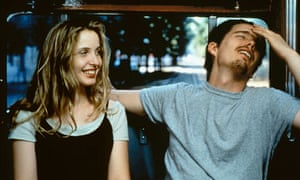
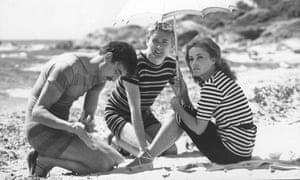

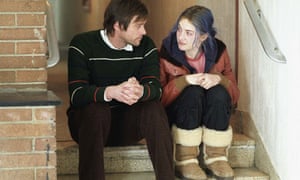
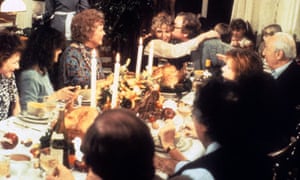
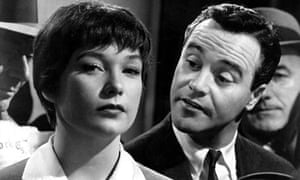
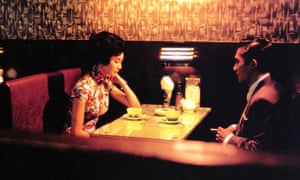
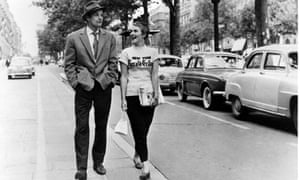
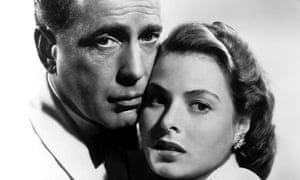
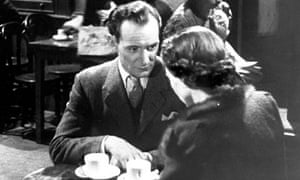
Comments
Post a Comment